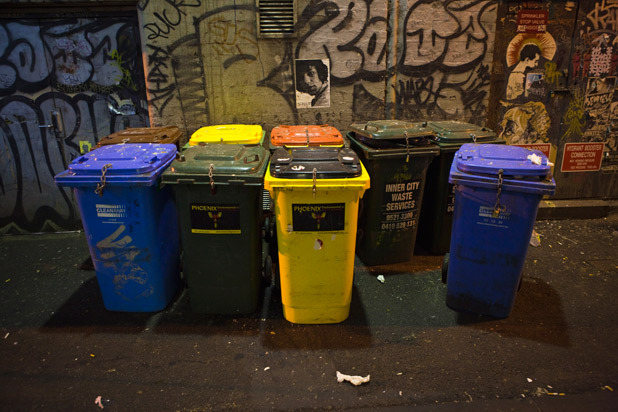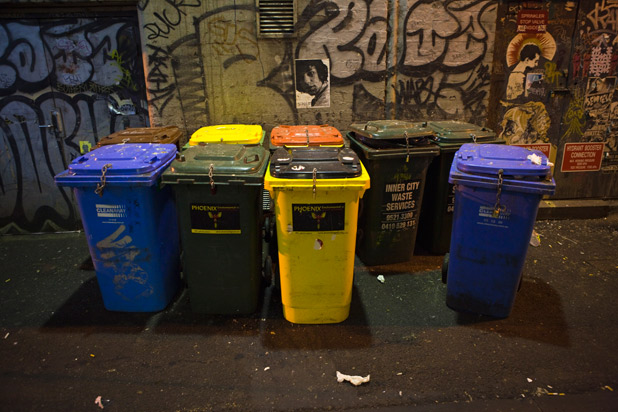These Countries Waste Enough Food To Feed The Planet
As the world's population whizzed past the seven billion mark, global food producers started getting more and more nervous about how they were going to feed so many people with the planet's dwindling food resources. Simply put, there isn't enough grain, vegetables, and meat to meet the growing demand. And yet, more than a third of the food produced globally is wasted — simply left to spoil, pass by its expiration date, and just thrown away while it's still perfectly edible.
These Countries Waste Enough Food to Feed the Planet (Slideshow)
According to the United Nations Environmental Program (UNEP), around 1.3 billion metric tons (a metric ton is equivalent to 1000 kilograms, or 2,205 pounds) of food are lost or wasted every day — that's estimated to be around one-third of all food produced. Worse still is that richer countries like the U.S. and U.K. are the worst culprits, chucking away 222 million metric tons of food daily, which is almost as much as the entire net food production for the whole of sub-Saharan African.
So where is this wasted food coming from? Well, remember how your mother told you to eat all the food on your plate at dinner? That was really good advice. As it turns out, most of the wasted food comes from households: food left to spoil or expire, or thrown away before it's even bad because we only wanted to eat the "freshest" produce. A lot of it is also down to too much food prepared for meals, which is then wasted because families don't want to eat the same thing twice in a row.
The hospitality industry is also a big culprit: catering and restaurant sectors have record high food wastage numbers, particularly in European countries like Finland and Norway. In Germany food wastage is costing the country roughly some €20 billion annually, according to a recent study from Stuttgart University.
Here in the U.S., around 30 percent of all food (with an estimated value of around $48.3 billion) is thrown away each year, and the environment suffers for it. Approximately half of the water used to produce all of this food also gets flushed down the drain, so to speak — agriculture is the largest human use of water. Worse still, much of that food wastage is for nothing: In North America, around 30 percent of fruits and vegetables supplied to supermarkets is simply tossed out because they are thought to be "not attractive enough" for consumers, i.e. bruised, scratched or not glossy or colorful enough.
When it comes down to it, wasted food doesn't just threaten our ability to feed the planet; it also endangers the environment in critical and potentially irreversible ways. It makes sense then that many of the world's governments are focused on finding ways to address these issues and drastically cut down on food waste. High-level think tanks are operating across the globe measuring each country and region's food output, the environmental resources required to produce that food, and the amount of food that is lost along the way (and for what reasons? Spoiled? Rotten? Or simply not pretty enough for mainstream supermarket shelves?). The resulting list is breakdown of some of the worst repeat offenders and, though it was difficult to definitively rank the list because of the plethora of data available that oftentimes varies, it is possible to get a general picture of food wastage as a whole across the globe.
So do what your mother suggested and finish all the food on your plate, because wasting it is just going to hurt you in the long run. Check out these countries that are by far the world's worst culprits when it comes to wasting food.
Serusha Govender is a special contributor to The Daily Meal. You can follow her on Twitter @SerushaGovender
Australia: 4.06 Million Metric Tons/ Year
Despite its small geographical and population size, Australia still manages to waste 1521 pounds of food per person every year, according to several studies. That's a reported 4.5 million metric tons — around $5.2 billion of good food down the drain every year! While all this may not seem like much in comparison to some of the bigger food wasters like the U.S., it is worthwhile to bear in mind that Australia is a lot smaller than these countries in livable landmass and population size, so comparatively the numbers are pretty high.
Denmark: 540,000 Metric Tons/ Year
The pragmatism of Danish environmental resource management does not extend to food. Their waste reportedly tops more than 1,455 pounds per person every year. The bulk of the wastage apparently comes from the catering sector and from households.
Click here to read more about which countries waste the most food.

